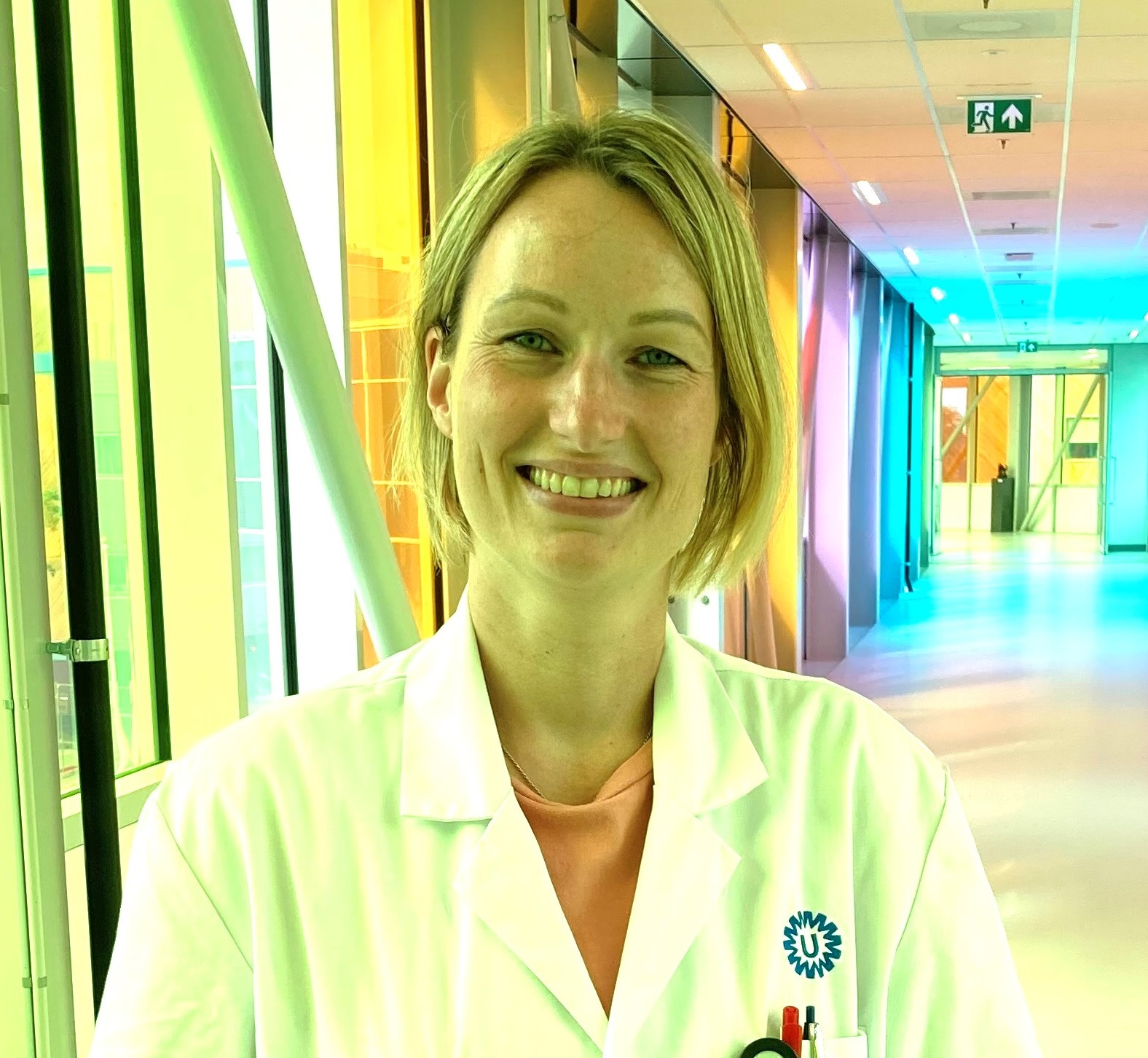Germ cells cause the development of sperm cells in men and eggs in women. The precursors of these cells can develop into malignant tumors, or cancer. This occurs mostly in boys and young men, both in the testicle and other places in the body. In the Netherlands, about five to 10 children and 850 young men develop a testicular germ cell tumor each year.
Dr. Caroline Hulsker, pediatric oncology surgeon at Máxima: 'From the treatment protocol we follow in children, the lymph nodes are very rarely removed from the abdomen. Although we often operate in the abdomen for other cancers, we therefore have less experience with this specific procedure in testicular cancer. In adults, this procedure is more common. By operating together with colleagues at UMC Utrecht, we learn more about this procedure and how best to perform it in children.'
Nurse specialist germ cell tumors at UMC Utrecht Daniëlle Zweers: 'Thanks to the cooperation between the pediatric surgeons of the Princess Máxima Center and the oncological urologists from UMC Utrecht, the patient gets the best of both worlds. Namely, attention to his developing body and the best surgery, precaution and aftercare for him. Within the expertise center, we find each other easily and exchange knowledge and experience daily.'

In addition to improvements in the operating room, opportunities for improvement are also being sought in the laboratory. The biobanks of the Máxima and UMC Utrecht play an important role in this. The tumor tissue stored in them combined with patient data make research into, for example, insensitivity to chemotherapy possible. For example, the research group of Prof. Dr. Leendert Looijenga demonstrated earlier from the expertise center how extra copies of a piece of DNA partly explain insensitivity to chemotherapy in germ cell cancer.
Treatment of germ cell tumors is customized
Dr. Richard Meijer, specialist in Oncological Urology at UMC Utrecht says, 'Germ cell tumors in men are rare. But, it is the most common cancer in young men between the ages of 15 and 35. They still have a life ahead of them with milestones in terms of social and sexual identity, education or work. This is why we supervise them intensively from the center of expertise. This allows us to discuss possible long-term damage with the patient in time and together determine the most appropriate treatment for them. So we treat germ cell tumors individually. It is tailor-made.'Learning from differences
Pediatric oncologist at the Máxima Dr. Annelies Mavinkurve: 'When a child is diagnosed with a germ cell tumor, surgery follows to remove the tumor entirely. If this fails or there are metastases, treatment with chemotherapy follows first. More than 90% of children are treatable this way.' Research shows that in some older children and young men, removing the lymph nodes located at the back of the abdomen gives a better chance of cure.Dr. Caroline Hulsker, pediatric oncology surgeon at Máxima: 'From the treatment protocol we follow in children, the lymph nodes are very rarely removed from the abdomen. Although we often operate in the abdomen for other cancers, we therefore have less experience with this specific procedure in testicular cancer. In adults, this procedure is more common. By operating together with colleagues at UMC Utrecht, we learn more about this procedure and how best to perform it in children.'
Nurse specialist germ cell tumors at UMC Utrecht Daniëlle Zweers: 'Thanks to the cooperation between the pediatric surgeons of the Princess Máxima Center and the oncological urologists from UMC Utrecht, the patient gets the best of both worlds. Namely, attention to his developing body and the best surgery, precaution and aftercare for him. Within the expertise center, we find each other easily and exchange knowledge and experience daily.'
'Thanks to the center of expertise, we work in a team of highly experienced specialists' Daniëlle Zweers, Nurse specialist


